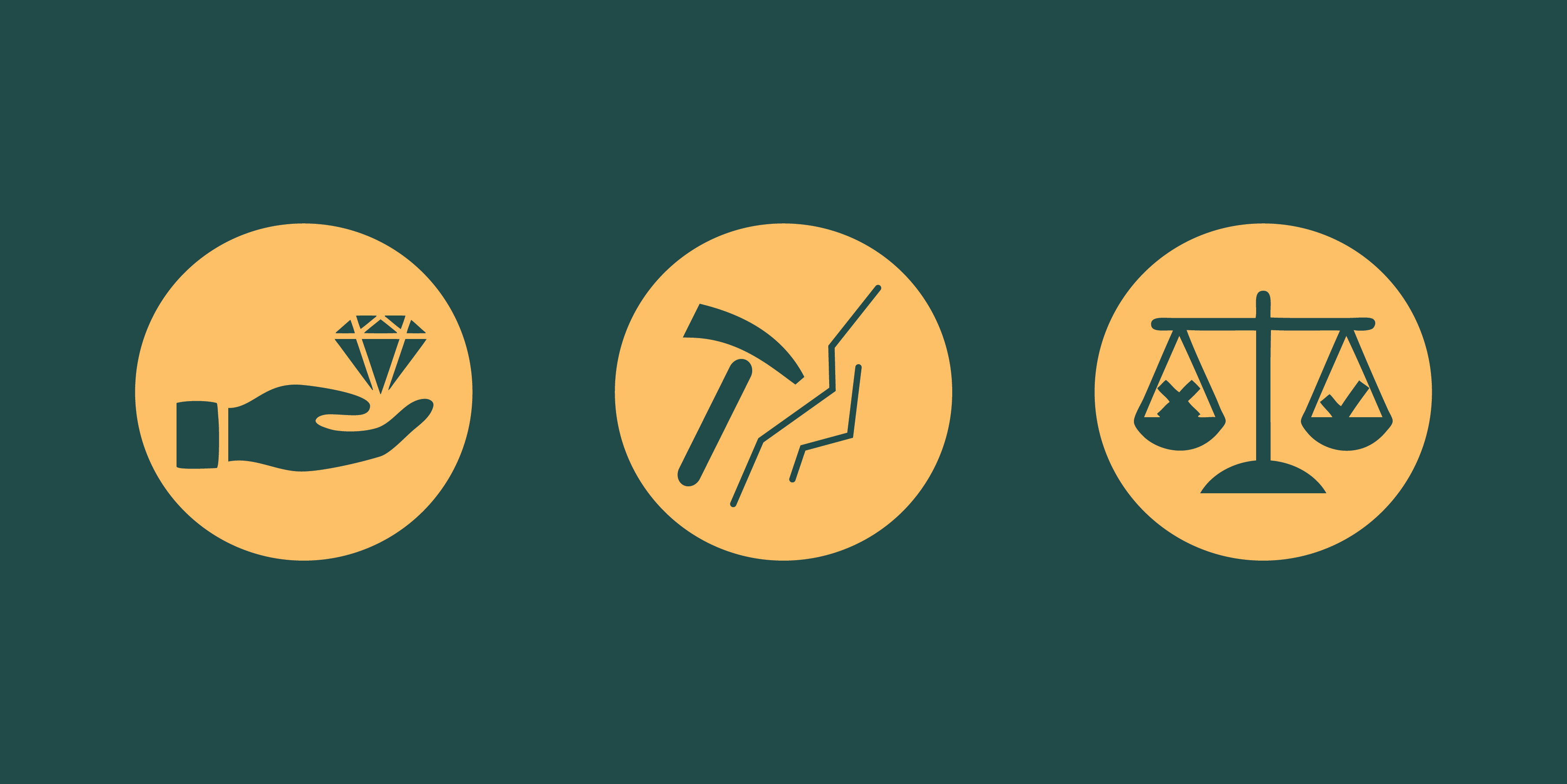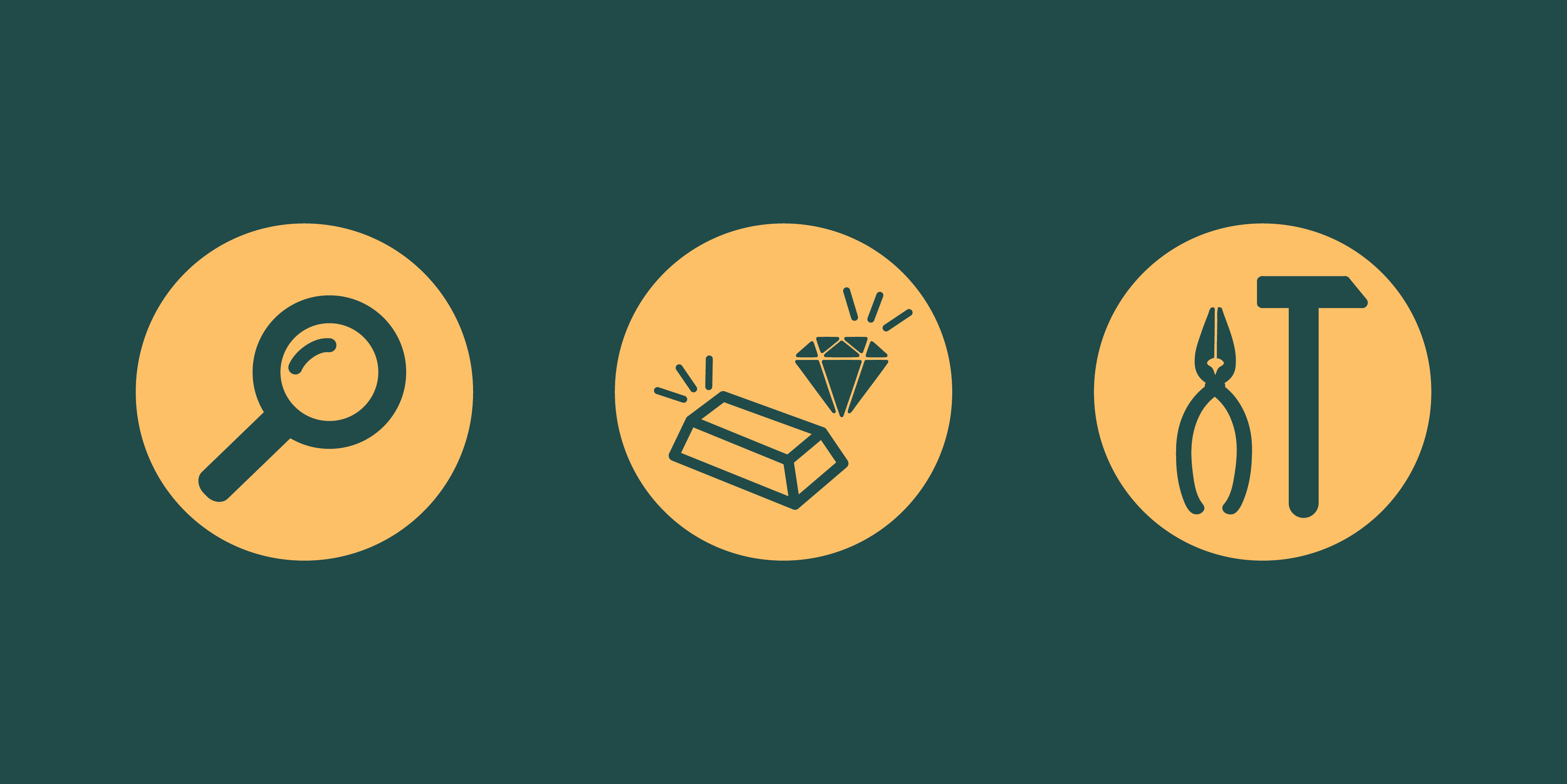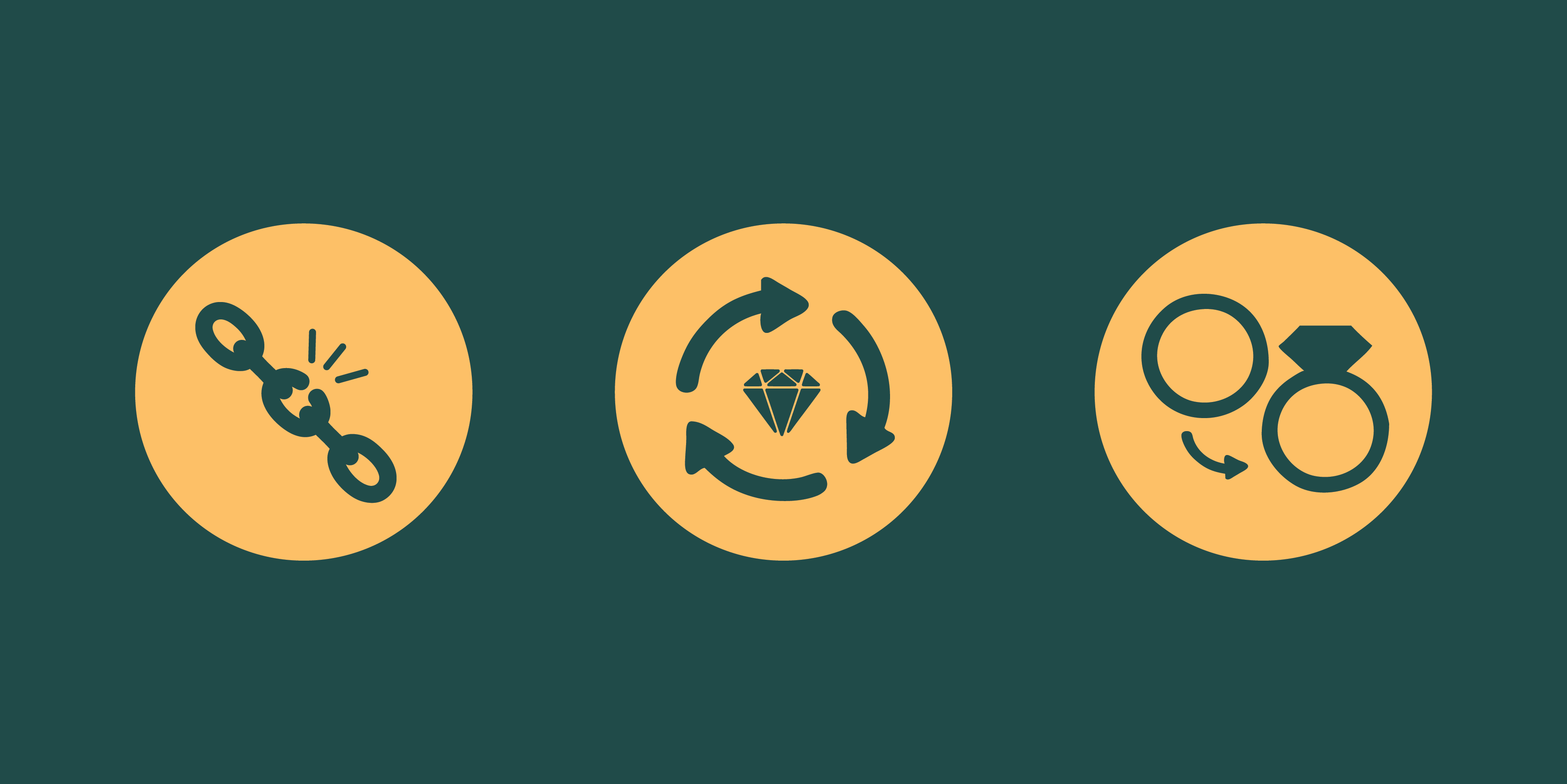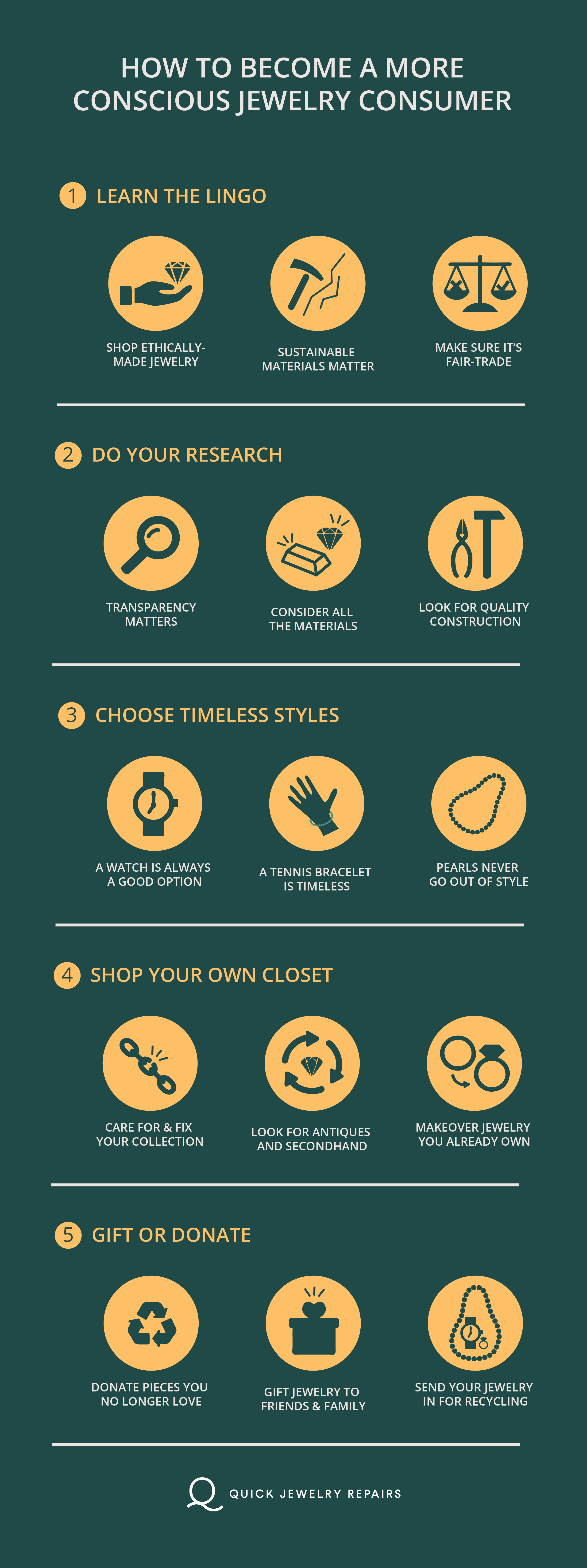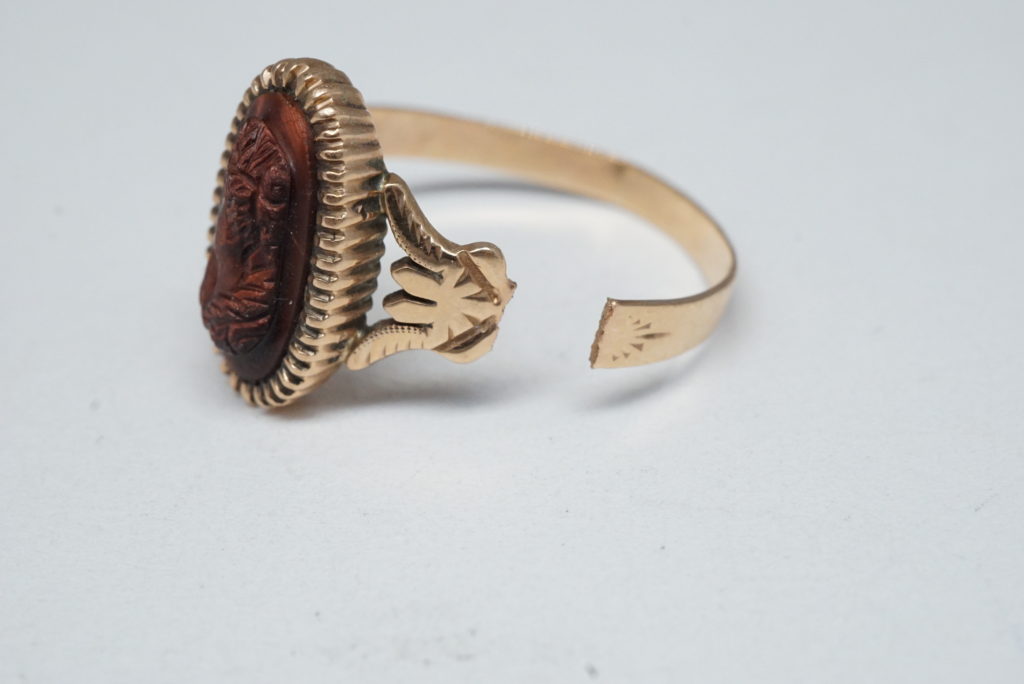How to become a more conscious jewelry consumer
Written by Kira Garrett
April 26, 2021
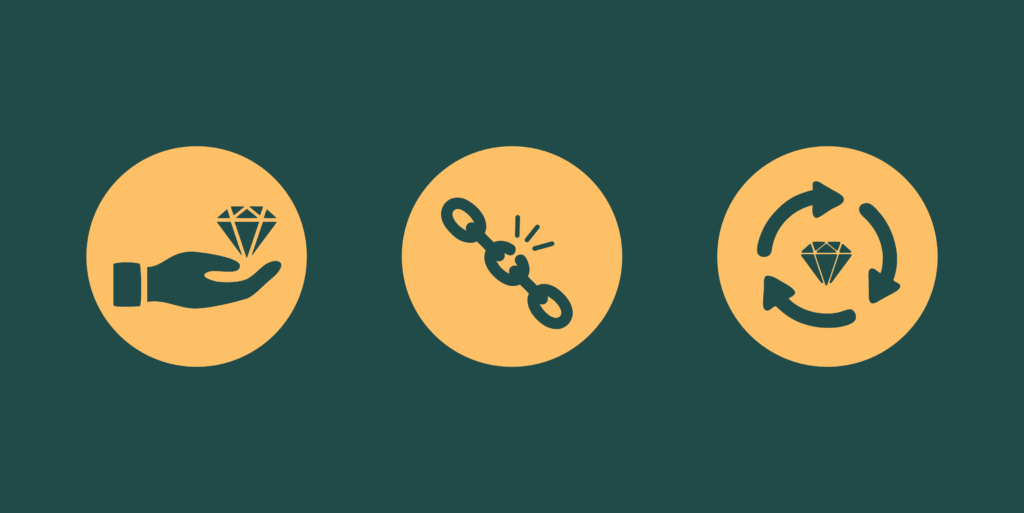
Your purchases hold a lot of power. This is why more and more people are taking care to consider the impact their choices make on others and on the earth. There are certainly some extreme examples of minimalism, waste-free living, and more that can make conscious consumerism seem intimidating. But there are many things you can do to become a more conscious jewelry consumer. Below is some information to help you build a jewelry collection you truly love. And feel good about.
Why you should care about being a conscious jewelry consumer.
It’s no secret that the jewelry industry has historically supported some pretty terrible practices. From unsafe working conditions to child labor and natural resource depletion to unnecessary waste and water pollution. The list goes on. It’s no surprise there’s been a call for reform or that ethical jewelry is rising in popularity. Many jewelry designers and manufacturers have made an effort to promote ethical and sustainable jewelry as an alternative. And more and more people are becoming conscious jewelry consumers.
Let’s learn some terms.
There are seemingly endless words to describe conscious companies and their social or environmental initiatives. It can be tough to distinguish what’s what when you don’t know the lingo. Here’s a look at some common terms sustainable jewelry designers use to talk about the good things they do.
Ethical jewelry
What is ethical jewelry? It’s not jewelry that’s right or wrong. But rather, it’s jewelry that’s made with the intent to “do no harm.” Ethical jewelry has no negative impact on the environment or on the laborers and jewelry artisans who help create it.
There are numerous technical definitions and rights organizations that aim to label and regulate “ethical jewelry.” But the most important thing to keep in mind is transparency. If a jewelry company is open and honest about sourcing, labor, and manufacturing, you can decide whether or not that company’s values align with your own. And whether or not you consider their products to be “ethical jewelry.”
That said, there are certain things most ethical jewelry brands do, including:
- Provide material traceability information
- Use sustainable materials
- Use synthetic gemstones
- Uphold strict labor laws
- Ensure fair wages
- Have a small carbon footprint
- Are locally-made
Sustainable materials
If you’ve ever wondered what makes jewelry sustainable—it’s the materials! Sustainable jewelry starts with material sourcing and there are two things that matter most:
- Environmental impact: Plain and simple, sustainable materials impact the earth as little as possible. This means that sustainable jewelry brands use materials that are mined safely, cleanly, and greenly. Or not at all.
And, lucky for you, there are several key organizations that help keep these companies honest. For example, the Alliance for Responsible Mining (ARM), works to make mining socially and environmentally responsible and sustainable. - Recycling: Repurposing gemstones eliminates the need to mine new diamonds and rubies. Plus, using recycled gold or silver reduces your jewelry’s carbon footprint even more. Many sustainable jewelry brands salvage materials to make an impact.
Recycled gold
Is recycled gold real gold? Yes! In fact, gold has been recycled, repurposed, and reused for ages. Precious metals can be recycled again and again—making them an excellent option for conscious jewelry designs. They reduce the demand for newly-mined materials, and in many cases, can reduce the cost of a jewelry piece.
Fair-trade jewelry
You’ve no doubt come across fairtrade coffee at your local cafe or fairtrade chocolate the last time you visited the grocery store. But jewelry can be fair trade, too. Fairtrade jewelry is made with materials sourced by laborers and crafted by artisans that receive fair wages. They also have safe working environments and in many cases, receive additional resources to support their communities.
Many fair trade jewelry companies go through a certification process—so they can promote their products as “Fair Trade Certified.” Certification can be expensive, so some jewelry companies choose to follow fair trade practices without getting the certification. Check with the manufacturer or supplier to clarify if you’re unsure just how “fair trade” their jewelry is.
Be a more conscious jewelry consumer and do your research.
As discussed, there are more companies than ever before that claim they care. This can make it tough to distinguish between those that are doing good and those that simply say they are doing good. The best way to ensure you know which jewelry designers you want to support is to do your research. Here's some information you should look for to help you become a more conscious jewelry consumer.
Transparency matters.
As a conscious jewelry consumer, information is key. And a jewelry company should tell you everything you want to know. Here are some things you should ask:
- Where are the materials sourced? If you’re looking for lab-manufactured materials, or sustainably-mined materials, geography matters! Many sustainable jewelry brands tell you exactly where each element comes from. This way you can make a decision about whether or not you want to purchase jewelry made with elements from that area.
- How are the materials sourced? How materials are sourced is just as important as where they’ve come from. Sustainable sourcing comes in many forms, so it’s up to you to determine whether or not you’re on board with a jewelry designer’s process.
- Where is the jewelry made? Fabrication is another thing you’ll want to know about! If you only support Made In The USA brands, you’ll need to know where the jewelry studio is located.
- How are laborers and artisans treated? This question is essential! As discussed, a company can’t make ethical jewelry without caring about the people who help bring each piece of jewelry to life.
Quality over quantity.
While it can be tempting to buy all the jewelry you like—consider taking a more refined approach to your purchases. Look at materials and construction to ensure it’s high quality. Invest in fewer, more meaningful pieces. And consider timeless styles that’ll last a lifetime. Here are some tips to help you choose quality over quantity.
Know the stones.
Do you have a favorite stone? Maybe it’s your birthstone, or maybe you love diamonds. After all, they are a girl’s best friend. Whatever your preferences are, there are some things to keep in mind—beyond the color, when selecting a stone.
- Durability: Some gemstones are tough enough to handle everyday wear and tear. Sapphires and rubies can handle life without getting scratched. But other stones, like pearls or opals, require a bit more care. They aren’t suitable for jewelry that’ll take a beating. The strength and durability of the stone are important to consider when purchasing or designing jewelry that will last.
- Precious vs. semi-precious: Are precious stones really more special than semi-precious stones? Not necessarily. That said, precious stones can be the most coveted, and could make for a good investment in a jewelry piece you’ll love forever. Precious stones include sapphires, rubies, emeralds, and diamonds. Semi-precious stones include most other stones.
- Lab-created vs mined: While lab-created gems can be an eco-friendly alternative, they could potentially result in a less-valuable piece of jewelry. While this may not matter to you, it’s a good thing to keep in mind before you make the investment!
Meaningful metals.
It’s also a good idea to understand which metal is best. The type of metal you choose can change the look and lasting-ability. So keep these things in mind:
- Compatibility: Certain metals work better with one stone over another. The best way to ensure the metal you love is a good match for your stones, is to check with the jewelry designer.
- Lifestyle: Your lifestyle matters when selecting the best metal for your jewelry piece, too. Silver scratches more easily than gold, and may not be your best bet for an everyday ring. Tungsten is the strongest of all, but might not be necessary for a necklace that won’t move around much.
- Keep colors in mind: The metal you choose acts as an accent to your stones. And your clothes. Consider whether white, yellow, rose, or silver will compliment your other color choices before you make your selection.
Consider construction.
If you want to invest in jewelry that will last, you need to select pieces that are made well. High-quality construction will keep your gems safe. But with so many types of jewelry and materials to consider, it can be tough to determine what will last. Here’s how you can tell if jewelry is high quality:
- Details matter: Jewelry is dainty yet valuable, so all the small things matter when it comes to fabrication. Check out prongs and stone settings to make sure they’re secure. Check link connections and all the other small things that can make a big difference in quality.
- Find out about the findings: Your jewelry should have quality findings, too. While it can be a way to cut down on costs, using filler or plated findings can lead to broken clasps or loose jump rings. A quality piece of jewelry should use only the best materials—and that includes the oft-forgotten findings.
- Buy hand-made: The best way to ensure you’re buying a quality piece of jewelry that will last—is to work with a jewelry designer you trust. It can be tough to get the same level of communication and transparency purchasing from a big chain jewelry designer as you can working with a local artisan.
Be a more conscious jewelry consumer and ignore trends. Try for timeless.
Of course, it’s fun to wear the latest jewelry designs. But all too often those trendy statement pieces aren’t ones you want to wear year after year. To become a more conscious jewelry consumer, invest in timeless styles you’ll love for a lifetime. This will not only save you money over time but will ensure you’re making more conscious decisions when it comes to curating your jewelry collection. Here are some classic pieces to invest in:
- A watch: Wear it on its own or with a stack of bangles. No matter how you style it, a watch anchors an outfit and acts as a signature piece for your wardrobe.
- A chain necklace: The great thing about chains—is that you can swap out pendants for a totally new look. Whether you go for a chunky chain, or a dainty one, it’s a versatile staple you can transform over the years.
- A tennis bracelet: Nothing sparkles like a diamond tennis bracelet. Even if you’re not into sports, a tennis bracelet is a classic piece you can add to make any outfit feel a bit more special.
- A pearl necklace: The great thing about pearls is that they come in countless shapes and sizes. Choose a necklace that suits your style for a lasting piece you can reach for every day. Plus, they’re easy to restring, which means you can count on them to last for a long time.
Be a more conscious jewelry consumer and don’t buy new jewelry.
If you don’t want to purchase new jewelry from ethical jewelry designers, purchasing second-hand, vintage, or antique jewelry is another way to add to your jewelry collection without adding to your carbon footprint. Here are some things to consider:
- Keep your style in mind: When purchasing jewelry at an auction or shopping for one-of-a-kind vintage pieces, you may feel pressured to pull the trigger. But make sure you’re only purchasing pieces that you’ll truly use and love—instead of what’s available at that particular estate sale.
- Invest: Look for pieces that will increase in value over time. Buying antique or vintage jewelry is a little bit like investing in art. Try for iconic styles or designers you know will be in high demand for years to come.
- Be patient: Shopping secondhand takes time. You can’t walk into a store expecting to see a full selection of styles you love—like you can when shopping in traditional stores. Instead, it takes a little digging and a lot of patience to collect vintage jewelry.
Shop your own closet.
Being a conscious consumer also means knowing when NOT to make a purchase. If you’re looking for the ultimate earth-friendly option: it’s already in your jewelry box. You’ve no doubt collected some stunning pieces over the years. So make the most of them!
Care for your jewelry.
Frequent jewelry care helps prevent expensive repairs and ensures your favorite earrings are ready for you the next time you need them! Plus, it’ll save you from purchasing replacement jewelry you don’t need. Here’s what you should know about jewelry maintenance:
- Cleaning: When your jewelry is dirty or dull, send it in for our spa service. We’ll steam clean, tighten stones and polish your favorite piece. But it's also a good practice to prevent it from getting that dirty in the first place. Consider a cleaning routine to keep your accessories in tip-top shape.
When your stones have lost their sparkle, start with a simple cleaner. Eco-friendly dish soap is a great option if you don’t want to use a jewelry-specific cleaner. Use a small, soft-bristled brush to clean gemstones. Then, simply soak the entire piece in the cleaning solution. Strain. And dry thoroughly.
- Storage: You’re likely guilty of tossing a necklace into your purse to later pull out a tangled mess. We’ve all done it. But it’s a good reminder to put your jewelry away—carefully! Storing jewelry in a container with compartments helps prevent tough tangles. If you can, look for soft padding. This helps prevent scratches. It’s also a good idea to stow silver and gold jewelry in tarnish-resistant pouches.
- Check the details: Check your jewelry for loose stones, weakened clasps, and anything else that might soon require a repair. It’s better to discover your prong has come loose before your stunning solitaire stone falls out. An easy way to remember is to do a check while you’re cleaning. You’ll be up close and personal with your jewelry anyway, and it’ll ensure you don’t lose a piece of your favorite piece.
Fix broken or damaged jewelry.
Many conscious jewelry consumers know there’s no need to purchase new jewelry when you can fix your current favorites. Quick Jewelry Repairs makes it easy and affordable to repair broken or damaged jewelry. You likely know you can send in a necklace for a clasp repair or a broken pendant to get its shank remade. But here are some lesser-known repair services:
- Lost earring replacement: You made it home from a day running errands and reached up to find—only one earring. While this seems like a good time to say goodbye, don’t ditch your single earring yet! Quick Jewelry Repairs can work with you to make a matching earring and complete your set, once again. A much more conscious option than buying an entirely new pair.
- Stone replacement: Of course the center stone is any ring’s show stopper. Without it, you may feel like your ring’s not worth revival. But Quick Jewelry Repairs can set a new stone—so you don’t have to buy a new ring.
- Ring resizing: Of course you can get a ring resized when it’s too big. But if you find your fingers have gotten plumper over the years, you can also have a small ring enlarged. It’s a great way to make your rings wearable again, so you don’t have to upgrade to a new ring in a larger size.
Convert old jewelry into new jewelry.
Maybe your style has changed over time and you no longer love the pieces you previously invested in. Or perhaps, you’ve inherited some heirlooms that don’t suit your taste. Whatever the case may be, there’s a lot you can do to renew a piece of jewelry. Here are some common jewelry conversions Quick Jewelry Repairs can make:
- Pin to ring: When you’re not a pin person, turn your pin into something else! Converting a pin to a ring allows you to take a piece you wouldn’t otherwise wear and turn it into something that can become a wardrobe staple.
- Pin to pendant: Wearing brooches is not always in style. But instead of selling or donating your pin, transform it into a pendant—that you’ll actually wear!
- Earring to pendant: If you find yourself with a lonely earring, consider turning the one you do still have into a pendant. It’s a great way to make the most of the materials you have on hand.
Be a more conscious jewelry consumer and donate the jewelry you don’t love.
It’s eco-friendly for you to shop for jewelry second-hand. Support others who want to do so, too, by donating any jewelry you don’t love to a thrift store. Not only will you enable other jewelry-lovers to make conscious jewelry purchases, but you’ll likely help out your community too. Many secondhand stores support community-enrichment programs and more, so you’re doing lots of good when you make a donation. If you don’t want to donate, here are some other options to ethically offload your unused jewels:
- Start swapping: Host a swap party with your friends or neighbors. Encourage everyone to bring jewelry. Trade your less-loved items for something new.
- Gift your friends: Just because you don’t adore that adornment, doesn’t mean someone else won’t. Instead of buying gifts for your friends, gift them from your jewelry stash.
- List them online for free: If you don’t think any of your friends will wear your jewelry, find someone who will. List items online for free—to find them a new home with an appreciative owner.
- Find a jewelry designer: Some designers may be interested in your jewelry. They can recycle the materials and turn them into something new. This is a good option if you want your jewelry to live on—as reimagined jewelry that someone else will love.
Whether you invest in ethically-made jewelry, recycled pieces, or decide you don't need to make any additional purchases, it's important to consider the impact your choices can make. Learning industry lingo helps keep you informed. Considering construction techniques helps you look for quality jewelry that'll last. And knowing your options when it comes to a repair or redesign, helps you become a more conscious jewelry consumer.
